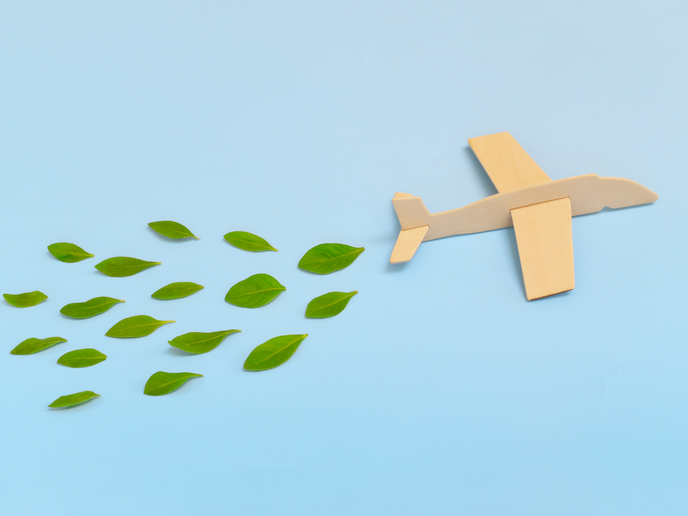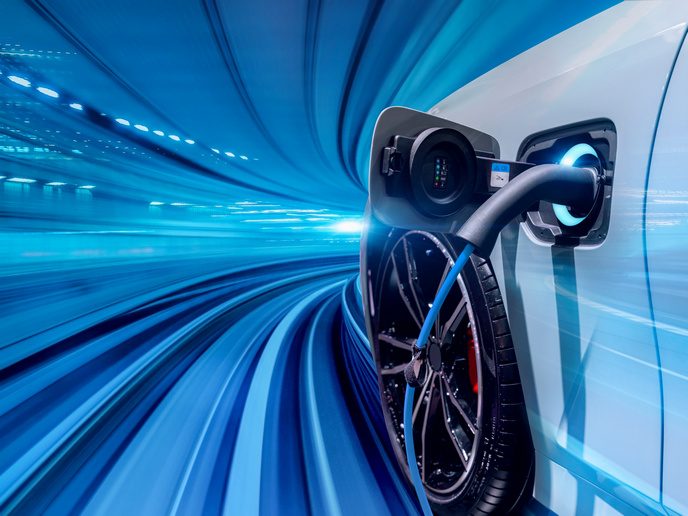Synthetic kerosene from renewable sources could power the transition to zero-emission flying
This alternative to fossil-derived jet fuel may seem far-fetched, but it is a concept that the EU-funded KEROGREEN project proved experimentally and partially at scale. “When using renewable energy and CO2 from the atmosphere, we have a closed carbon loop for the production of hydrocarbon-based fuels. We can thereby continue using the existing storage and distribution infrastructure and, importantly, the same aircraft engine technology,” notes project coordinator Adelbert Goede. Synthetic jet fuels like kerosene, which can be used directly today’s aircraft engines, can be formed from syngas, a mixture of carbon monoxide (CO) and hydrogen. However, the goal of KEROGREEN has been to produce a green, carbon-neutral form of syngas that does not create additional carbon emissions. “This problem has been tackled by converting water and air (CO2) into high-energy-density fuels powered by renewable electricity,” highlights Goede.
An unconventional route to converting CO2 into fuel
The idea of extracting CO2 from the atmosphere and converting it into fuel is simple. At plasma conditions, CO2 is efficiently split into CO and oxygen (O2), the most energy-intensive step of the process. Mixed with water, syngas is formed via the well-known water-gas shift reaction and subsequently converted into liquid hydrocarbons (kerosene) via the well-established Fischer-Tropsch process. High-temperature electrolysis and plasmolysis are commonly used for CO2 conversion. However, both methods present pros and cons when used separately. For example, high-temperature electrolysis is highly energy efficient, directly separates CO and O2 but relies on the use of scarce electrode materials that degrade with time. Conversely, plasmolysis uses more abundant electrode materials, instantly switches on and off, responding well to the intermittent nature of renewable electricity. However, it requires an additional step to separate O2 from CO and CO2. KEROGREEN offers a sustainable route for CO production by combining these two methods. In this coupled process, the CO2 plasmolysis gas mixture is supplied to a solid oxide electrolyser cell (SOEC) to separate the product gases. O2 is transferred to one side of the SOEC, where it is removed. The remaining CO and CO2 are transported to a chemical plant for liquid fuel synthesis. Results show that the product stream of the coupled plasma-electrolysis process contains 91 % less O2 and 138 % more CO than those supplied by plasmolysis alone. In addition, durability tests (~100 h) show better stability of the perovskite electrode material for the coupled process than for CO2 electrolysis alone. Energy density plays an important role in determining the flight range. “Sustainable, high-energy-density fuels are crucial for long-haul flight. We deem that synthetic kerosene made from water and CO2 with the help of renewable energy will be a more proper alternative for powering future aircraft. Hydrogen alone (even in its liquid form) is too bulky, and batteries add too much weight to aircraft,” remarks Goede. Furthermore, synthetic green kerosene emits no sulfur and less soot, whilst nitrogen oxide emissions are minimised.
Ideal for decentralised systems relying on renewable energy
“KEROGREEN’s innovative technology fitting into a shipping container is modular, scalable and well suited to small-scale distributed production plants sited in remote areas, for example, an off-shore wind park or a solar farm in the desert,” states Goede. All steps of CO2 conversion via the plasma-electrolysis process have been demonstrated at TRL 3. Researchers will work to further scale the O2 separator in a follow-up project.
Keywords
KEROGREEN, CO2, carbon monoxide, syngas, synthetic kerosene, long-haul flight, SOEC, solid oxide electrolyser cell







